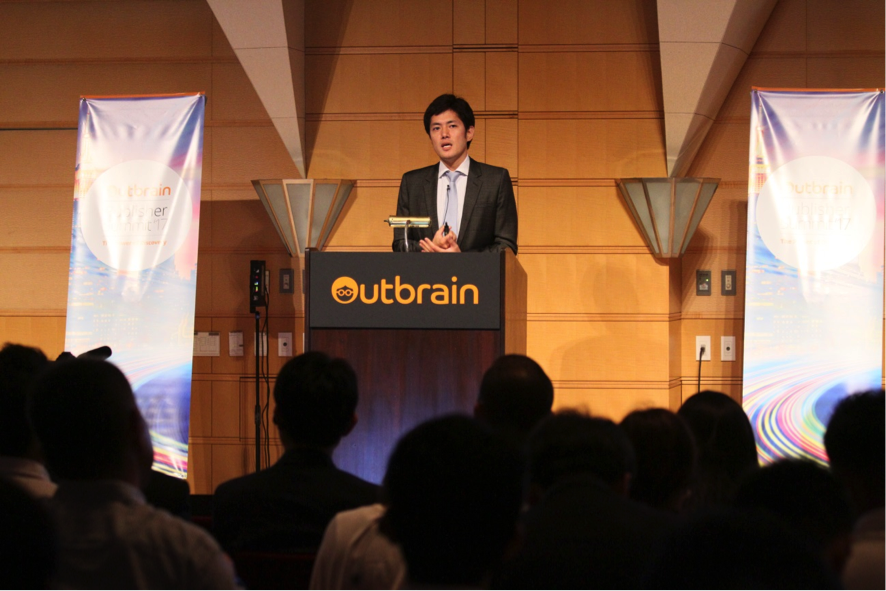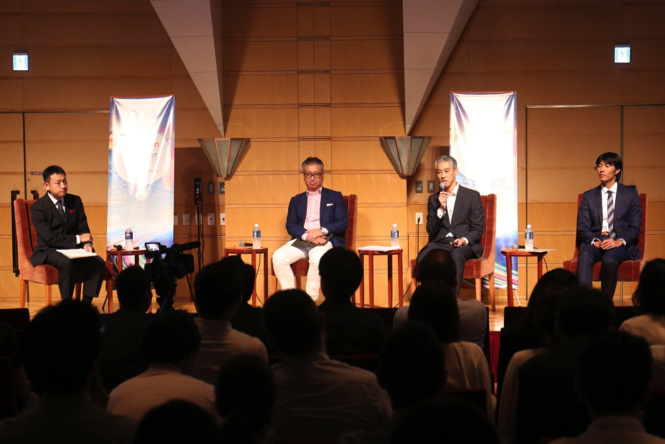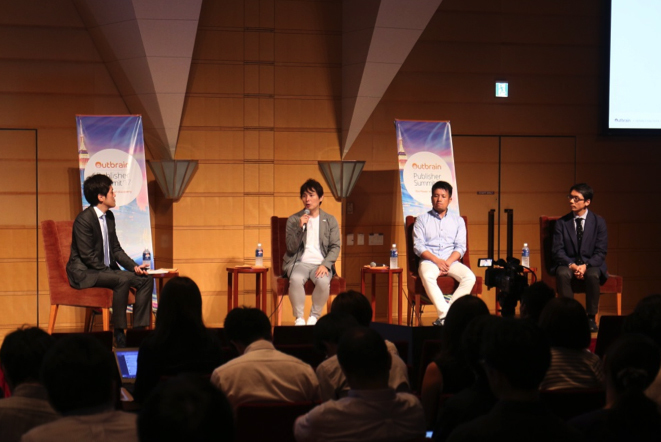What matters is not page views, but second PV.
"How should marketing target the millennial generation?" "Are there strategies to prevent brand value erosion from the risk of ads appearing alongside hateful content?" "Are measures in place against unhealthy media supply chains, such as ad fraud?"
Today, advertisers are expected to deliver results while confronting these challenges. Publishers sharing this awareness gathered at the "Outbrain Publisher Summit 2017" on July 13 at the Tokyo American Club in Minato Ward to explore the potential of content marketing. The event was hosted by Outbrain, known as a content discovery platform. Domestic and international stakeholders gathered for lively discussions.

Opening the event, Hiroshi Shimase of Outbrain Japan stated, "For this fourth iteration, we aim to revisit the theme of why Outbrain emerged and what value it provides."
Next, co-founder and CEO Yaron Galai, visiting Japan for the first time in three years, took the stage. He highlighted that Outbrain now serves over 300 premium publishers and 700 premium marketers in Japan, explaining the role Outbrain plays in content and user engagement.
He explained that the company's guiding principle, referred to as the "Lighthouse," prioritizes "the long-term success of publishers," specifically focusing on acquiring second page views.
"First page views can be purchased externally, or they might be driven by clickbait titles designed solely to attract clicks, or even by pure coincidence. What we prioritize instead is increasing second page views that provide valuable experiences for users. We believe second page views, which indicate users returning to that content, are one of the metrics that contribute to brand value. Our role is to demonstrate the next-generation technology that will rival SNS platforms." He centered his discussion around the company's mission.

Next, a session titled "Challenges Facing Publishers and the Potential of Discovery" featured three speakers: Mr. Rikimaru Higashi, Managing Director of Media Business at Grape; Mr. Akihiro Ishikawa, Deputy Manager of the Sales Promotion Team at Sankei Digital's Sales Division; and Mr. Hideki Kawamura, Manager at Shogakukan's Advertising Bureau Digital Media Sales Center.
Here, case studies of initiatives by various media companies that adopted Outbrain were introduced, showcasing remarkable results.

Additionally, a panel discussion titled "What Do Brands Now Expect from Publishers?" featured Ken Suzuki, Senior Manager of Marketing at New Balance Japan; Jun Nagashima, Group Leader of the Communication Planning and Production Group in LIXIL's Advertising Department; and Shinichi Iwata, Head of Marketing at Lifenet Insurance Company. They engaged in a lively exchange of views on their respective brand strategies, KPIs in content marketing, and key metrics they prioritize.

Finally, regarding expectations for publishers: "We have many expectations. We believe Japanese publishers have potential. Beyond digital, we value the editorial power media possesses, their unique networks, and contact points. Compared to Europe and the US, Japanese publishers tend to be fragmented by media outlet. For those with specialized, non-news themes, we want integrated proposals. In our field of sports, for example, we want to know what contact points and engagement that media outlet creates. We want them to leverage that." (Mr. Suzuki) "From the perspective of a marketing team on the advertiser side like ours, we don't expect proposals saying 'we can do all sorts of things.' We expect proposals saying 'we can do this.' Publishers should know more about users than advertisers do, so we want proposals that say 'we can't do this, but we can do that.' This allows advertisers to correctly understand the publisher's value. If the challenges and needs align with the proposal content, the resulting content quality will be higher, which should ultimately increase the publisher's value," (Nagashima). "Proposal materials often boast, 'We have a million users,' but I want to know what kind of group those million users form. It seems we've gone too far into just looking at numbers, ignoring the attributes of each individual reader. I want proposals from those who truly understand readers best. Also, personally, I sometimes feel articles become so homogenized that when you hide the header and footer, you can't tell which publication they come from. I hope to see new initiatives leveraging publishers' unique characteristics emerge through vigorous debate," (Mr. Iwata). Specific requests and proposals like these led to valuable exchanges with attending publishers.
Was this article helpful?